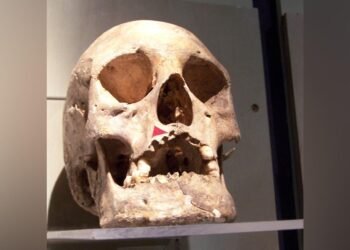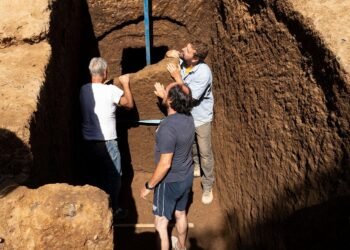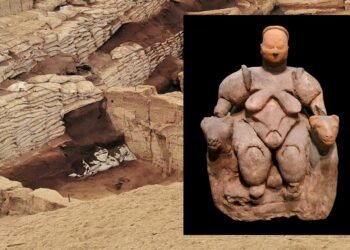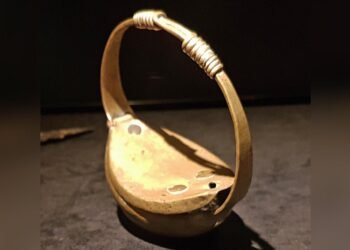A carving of a wild donkey was discovered on a stone in Karahantepe, a Neolithic settlement in Turkey that dates back roughly 12,000 years.
Discovered in 1997 near Yağmurlu, Karahan Tepe has long been of interest to archaeologists due to its connections with Göbekli Tepe. Both sites feature similar T-shaped stelae and architectural elements, indicating a possible cultural and chronological link. The site is believed to date from between 9,000 to 11,000 BCE. Previous excavations have uncovered 266 stelae, various depictions of animals and human-like figures, and a rock-cut chamber with 11 large phalluses.
The ongoing excavations at Karahan Tepe, led by Professor Dr. Necmi Karul, have revealed a remarkable new find: a depiction of a running wild donkey carved onto a stone laid on the floor of an ancient structure. This depiction, approximately 20 centimeters in length, is notable not only for its size but also for its dynamic portrayal, which reflects the artistic skills of Neolithic people. “The donkey figure found is a figure about 20 centimeters long, placed right next to the grinding stone,” Dr. Karul told the AA correspondent. “Rather than its dimensions, the fact that it is mobile and depicted in proportion to the stone on which it is carved is again an indication of the skill of the artists of this period.”
The significance of this find goes beyond its artistic value. According to Dr. Karul, the wild donkey motif is the first of its kind discovered at Karahan Tepe, adding a new dimension to our understanding of animal iconography and the relationship between humans and their environment during this period. He explained that the animals depicted in the iconography of the era generally fall into two categories: those with an eerie, imposing presence, often seen on the obelisks, and more commonly consumed animals, such as birds, gazelles, and wild donkeys. The latter were animals that people lived with, consumed, and were surrounded by, compared to the more fearsome creatures.
Neolitik Çağ’ın en önemli yerleşim yerlerinden biri olarak tarihin derinliklerine ışık tutan #Karahantepe‘de yeni keşif! 💫
Taş Tepeler projemiz dünya tarihine ışık tutmaya devam ediyor…
✨ Karahantepe’deki bir kulübenin tabanında koşar halde betimlenen yaban eşeği figürüne… pic.twitter.com/N1QXgTPXDy
— Mehmet Nuri Ersoy (@MehmetNuriErsoy) August 31, 2024
“The depiction of the wild donkey in motion, carved onto the base of a grinding stone, is particularly notable as it is the first time we have encountered such a moving wild donkey motif,” Dr. Karul added.
The discovery of the wild donkey motif comes as part of the broader Taş Tepeler project, which includes excavations at 10 different locations, including Karahan Tepe. The team has been focusing on several public buildings and huts surrounding the central public structure at the site. One such building, described by Dr. Karul, is partially subterranean and features a wattle and daub roof supported by a short stone wall. The floor was paved with large flat stones, some of which had been used as grinding stones. It was on one of these stones that the wild donkey motif was discovered.
Mehmet Nuri Ersoy, the Turkish Minister of Culture and Tourism, expressed his excitement about the ongoing discoveries at Karahan Tepe. “Karahan Tepe sheds light on the depths of history as one of the most important settlements of the Neolithic Age,” he said in a recent press statement. “The Stone Hills project continues to shed light on world history.”























